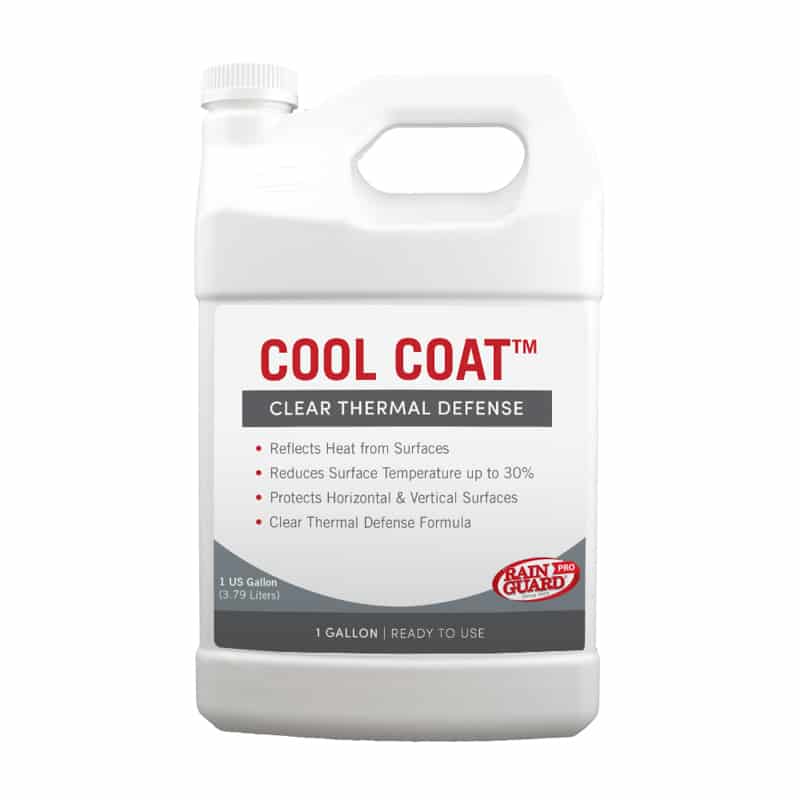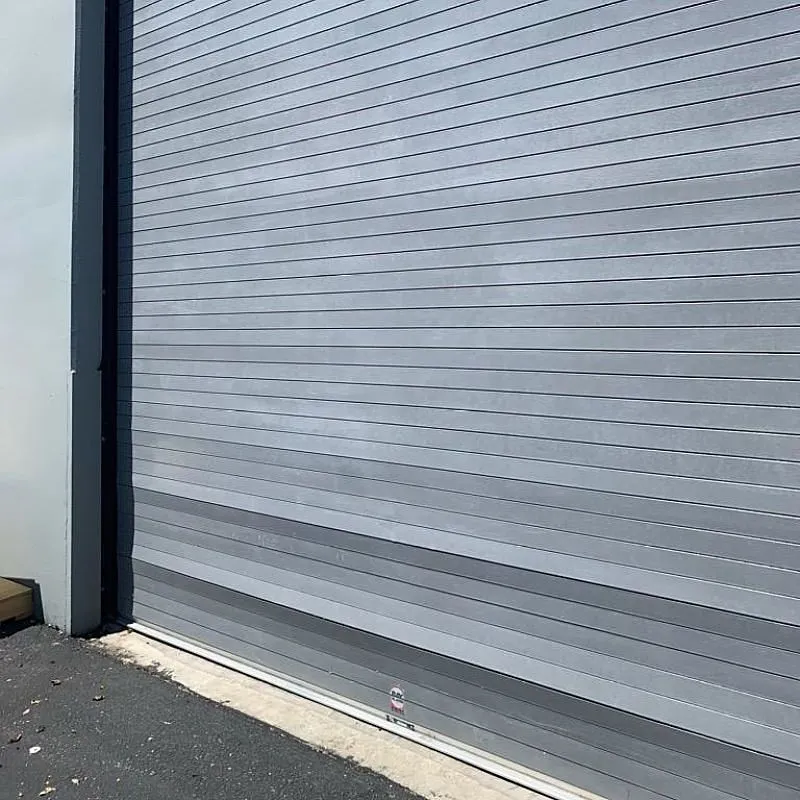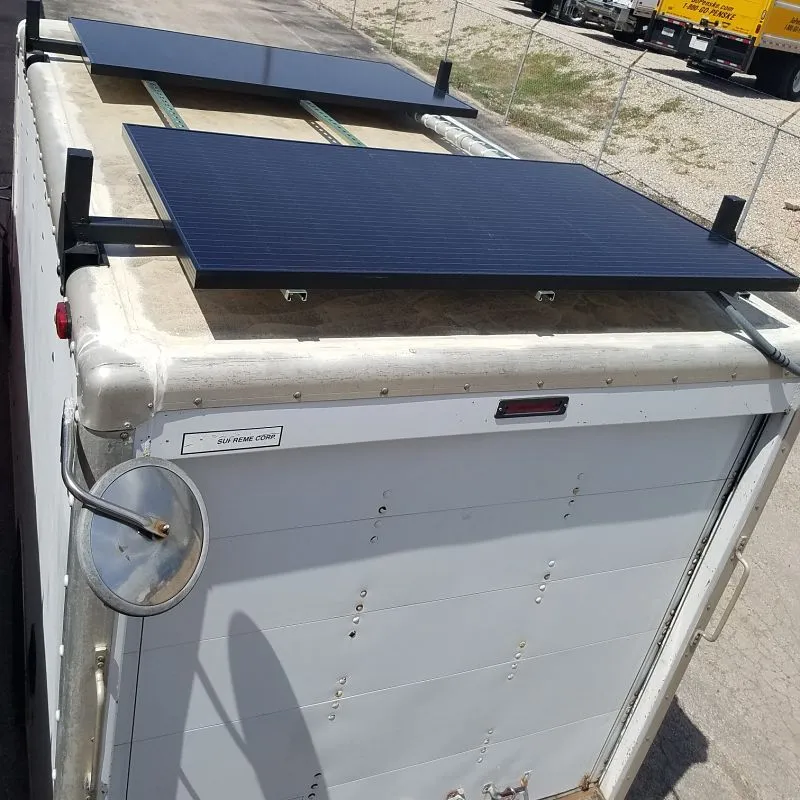No products in the cart.
Return To ShopCLEAR COOL COAT ELASTOMERIC PAINT REDUCES HEAT BUILDUP ON WALL & ROOFS
Rainguard’s CLEAR COOL COAT is a premium quality, heat reflective paint and thermal barrier high build, 100% acrylic water-based elastomeric coating with ceramic sphere technology that provides waterproofing and insulating benefits to reduce cooling costs in the summer and heating costs in the winter that comes in a decorative clear translucent matte finish that allows the surface color to come through (it can be slightly hazy over dark accent colors only). Over 200% dynamic elongation and recovery strength ensures that the coating will move and flex with the thermal changes of the masonry surface to help prevent rupturing or cracking.
COOL COAT is vapor permeable yet resists the effects of wind driven rain. It restores and beautifies damaged masonry surfaces and unifies color and texture on new surfaces. Use on new or existing surfaces including block, brick, stucco, cement, concrete, wood, metal (painted) and EFIS. COOL COAT is quick drying with excellent adhesion and hide.
As a Thermal Paint, Works Like a Liquid Pane Of Thermal Glass. Offers Both Heat Reduction And Cold Protection, Paint Film. Reflecting infrared radiation, use on exterior walls in the summer to reduce cooling costs and on inside walls in the winter to reduce heating costs.
Can also use on skylights (recommend testing for adhesion) to cool interior rooms (see Skylight Project Example) from the summer heat with only a small reduction in lighting.
For use on windows we now offer a complete selection of interior and exterior clear film options that can reject up to 89% of IR (infrared radiation) to dramatically cool a room while at the same time reducing glare and blocking up to 100% of UV rays. See our Heat-UV-Glare-Reflective-Window-film
Cool Coat is also available in a Ready-to-Use White Color. For outdoor projects requiring a colored horizontal surface including pool decks, patios, porch’s or other horizontal surfaces that require up to a 25% to 30% cooler surface, we offer our E28 Cool Life Deck Coating | Infrared Heat Reflective Technology Available in 12 Pre-tinted Colors.
PRIMER: If a primer is required for Clear Cool Coat, see our AcrylicPoly DTM Primer which is available in a clear version that will not yellow and can be applied over concrete, masonry, wood, plastic, fiberglass, painted metal surfaces
WHERE IS CLEAR COOL COAT USED?
- Construction & Remodel Projects: Exterior Building Walls, Sloped Roof Surfaces Not Subject To Ponded, Pooled Water (Contact Mfg To Confirm Application If Questions)
- Interior And Exterior Walls
- Painted Metal Roofs
- Painted Metal Handrails
WHY CLEAR COOL COAT?
- Clear protection – allows underlying surface color to be seen (it “can” be slightly hazy over dark accent colors only)
- Reflects Infrared Radiation Using Advanced Ceramic Sphere Technology
- Lower Cooling Costs in the Summer When Applied to Exterior Walls & Roofs
- Cool painted metal surfaces like metal handrails from the hot summer sun
- Lower Heating Costs in Winter When Applied to Interior Walls
- Superior moisture control performance
- 200% elongation resists cracking
- Great for high mold & mildew environments
- High UV resistance
- Breathable – does not trap moisture
- Apply to 35°F and rising temperature (1.7°C)
- 100% Eco-friendly: low VOC
- 5 Year warranty available
- Cool Coat meets requirements in Solar Reference Index of material in LEED 2009 for Construction and Major Renovation (SS Credit 7.1: Heat Island Effect-non Roof pg. 16).
- Additional information on cool roof and cool wall technology: www.energystar.gov and www.echo.ca.org
The solar reflectance, thermal emittance and SRI value of a wall or roof surface are important surface properties affecting temperature, which, in turn, drives the heat flow through the wall or roof. Cool Coat test results below demonstrate its effectiveness.
OPTICAL PROPERTIES
| TESTED | SOLAR REFLECTANCE AT AIR MASS 1.5 | THERMAL EMMITANCE AT 300K |
|---|---|---|
| Cool Coat | .812 | .875 |
| Uncoated Sample | .653 | .040 |
SOLAR REFLECTANCE INDEX (SRI)
| CONVECTION COEFFICIENT | COOL COAT | UNCOATED SAMPLE |
|---|---|---|
| Low, 5 W/m (2) K | 101 | 6 |
| Medium 12 W/m 92 K | 101 | 45 |
| High, 30 Wm (2) K | 101 | 63 |
Solar reflectance determines the fraction of the solar radiation incident from all directions that is diffusely reflected by the surface. The higher the solar reflective value the more efficient the product is in reflecting sunlight and heat away from the building and reducing roof and wall temperature.
Thermal emittance describes how well the surface radiates energy away from itself as compared with a blackbody operating at the same temperature. In warm and sunny climates highly emissive roof and wall products can help reduce the cooling load on the building by releasing the remaining heat absorbed from the sun Scientists use a number between 0 and 1, or 0% and 100%, to express emittance (the higher the number the more effective the coating).
Solar Reflective Index (SRI) SRI is calculated by using the values of solar reflectance, thermal emittance and a medium wind coefficient. The higher the SRI value, the lower its surface temperature and consequently, the heat gain into the building


